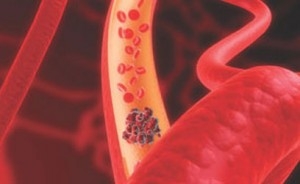Venous thromboembolism (VTE) – specifically deep vein thrombosis (DVT) and pulmonary embolism (PE) – is commonly considered when patients present to acute and emergency care settings with symptoms of shortness of breath, chest pain, leg swelling, and other symptoms. The diagnosis of VTE and subsequent care after diagnosis are rapidly evolving areas that all clinicians caring for patients in acute and emergency-care settings should know about. In particular, over the past several years, there have been a variety of new drugs approved for the care of VTE, particularly novel oral anticoagulant drugs (NoAC) and new drugs for the treatment of bleeding. Importantly, the new December 2015 CHESTguideline from the American College of Chest Physicians represents a tectonic change in the care for VTE, and in particular for subsegmental PE.
To ensure clinicians remain up-to-date on VTE care, the American College of Emergency Physicians (ACEP) recently released a FREE fantastic webinar titled, “Contemporary Emergency Medicine Perspectives on Venous Thromboembolic Disease.” The webinar focuses on VTE diagnosis and treatment in the ED, as well as how to manage bleeding for patients who are on anticoagulants (specifically novel oral anti-coagulants), as treatments rapidly evolve with newly approved options. Webinar speakers include two big names in emergency care: Charles Pollack, MD, MA from Thomas Jefferson University and Adam Singer, MD from Stonybrook University. The webinar can be accessed here. In order to view the webinar, you will need a log-in to ACEP’s eCME portal. Log-ins are free and you can create one on their eCME site here. Click “Login to Get Started” and then “Create an Account.” ACEP offers several other free, quality courses on this site.
A variety of topics are discussed, including:
- New treatment options for VTE in the era of new anticoagulant drugs
- How to manage bleeding issues for patients on oral anticoagulants
- How to individualize treatments based on risk factors and consideration of outpatient management for specific patients with VTE
- New drug treatment options for high-risk medically-ill patients in the ED
In short, this activity covers information that every emergency physician should know, so please log in and listen.
Departments,"Annals of Emergency Medicine 47, no. 4 (2006): 317-26.
Jesse Pines, MD MBA MSCE is the Director of the GW Center for Healthcare Innovation & Policy Research and a Professor of Emergency Medicine and Health Policy at the George Washington University.


